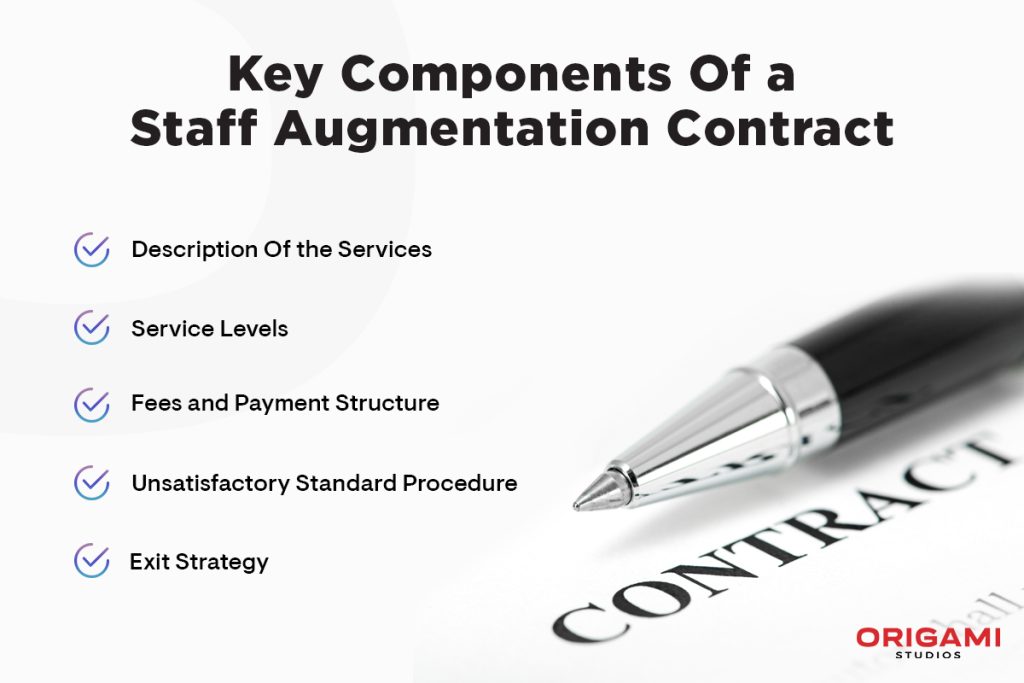
In 2004, BBC signed a 10-year-long contract with Siemens for outsourcing its IT services. Just within the first year, 60% of the projects were delayed and the costs exceeded the budget. The worst part?
According to the agreement, BBC was not permitted to sign another contract with a different IT sourcing vendor.
Arguably the most critical consideration while adopting staff augmentation is the contract. It can single-handedly push your efforts down the drain whether they involve selecting the right partner or having a foul-proof plan against challenges.
Having a well-crafted resource augmentation contract instills clarity and safety in the client-vendor relationship. This saves you from unexpected costs, compromised security, subpar quality, and other risks.
Considering the risks you could run into, we have created the ultimate write-up to cover everything surrounding the staff augmentation contract. Read on to know how you can avoid unforeseeable incidents and sign up for peace of mind.

Every staff augmentation service starts with a binding contract. Simply put, it is a legal document that specifies the project scope you have agreed upon with your staffing partner. This ensures that you do not have to face commitment failures later on.
There is more to it, however. A lot more in fact!
In the resource augmentation contract, you will find payment details, intellectual property rights, protection of confidentiality, liabilities, termination terms, compliances, etc.
Why hit the ground running with a contract?
Entering into a legally binding before hiring an augmented team will pave the way for a seamless venture. It would protect your data, make sure everything goes by the book, and serve as your legal compliance evidence.

Staff augmentation agreements usually follow one of the types:
Do you have an innovative idea in mind? Are sure how long and how much it would take to execute it?
If yes, you might need to sign up for a time and materials contract!
This type of contract suits the concepts which are raw, complex, or vague and it is not possible to form a good estimation of the inputs required. Because of that, the contractor charges you based on the time and resources spent once the project is completed.
That said, it is a good idea to put an upper cap on the total amount. This would save you in case the project cost stretches far beyond your budget.
As the name suggests, fixed-priced contracts have a mutually-decided compensation set before the beginning of the project.
What normally happens is the client’s company prepares a request for proposal (RFP). Then vendors bid against the RFP, as well as highlight other specifics like process, terms, compliances, etc. The one that offers the most convincing proposal, is hired at a fixed price.
This time of contract works well with short-lived ventures that have a reasonably predictable timeframe and resources.
If the staff augmentation agreement is poorly written, it poses the following risks:

The contents and contractor liability for staff augmentation make up two of the pivotal factors for the contract. Let’s discover what they are.
Which one do you think is a better description of service?
We assume that you have picked the second one. Why? Because it is more direct, specific, and detailed.
In contrast, the first description is vague and incomplete, which could lead to misaligned expectations between the two parties.
The bottom line—make sure to mention the central purpose of the augmented service, as well as primary deliverables. Other than that, have the client bear complete authority to supervise, monitor, and direct the augmented staff.
Read Also The Pros and Cons of Staff Augmentation vs Contractors
How can you get your expectations across clearly? The answer lies in service level agreement (SLA).
SLA is a measurable benchmark (set by the client) that the vendor must meet.
Since the staff augmentation contractor knows your expectations, they can select the best people for the task, prepare the required resources, and plan accordingly.
From the customer end, you get the critical service levels, key service levels, industry standards, and other metrics to gauge performance.
If the satisfaction levels are not achieved, settle on a warranty that assures:
Now comes the section that would establish what you would be paying against the acquired service.
The payment structure should be clearly defined and address the when, how, and whom of costing.
Taking ahead, make sure your payment structure answers the following questions:
Another thing to be mindful of is the difference between contingency and retainer fees.
The former works on a no-win-no-fees model where you only pay the agency when you have selected and engaged the temporary team. By contrast, the latter involves upfront payment regardless of your engagement with the augmented staff.

Ideally, you would want to have the project duration or tentative timeline, together with the commencement date mentioned in the staff augmentation contract.
What if you enter into a year-long contract with an agency that proves to be a disappointment just in the first month? How would you survive the next 11 months?
Have a reasonable strategy in place to part ways when things don’t work.
Before anything, consider having a term where you are immediately provided with an alternate worker if the current fails to satisfy. If that is the case, the vendor should freeze the hourly rate of the present worker right when you submit a written confession.
If that does not work, the only choice might be to terminate the contract.
Just imagine if you are a week away from your deadline and the augmented team suddenly decides to stop working. What a mess would that be!
Exit strategy ensures that if the partnership has to discontinue, it happens in the smoothest possible way.
Usually, the vendor’s side gives a termination notice 60 before, while the client announces it 30 days before going separate ways.
You may or may not want to define the conditions under which the termination would come into effect. For example, the contract could be terminated if the vendor merges into another entity or the client does not clear dues within a period.
Besides that, address these points in your exit strategy:

One of the pressing concerns for any business engaging a third party is the protection of data and privacy. This could be addressed by having the staff augmentation company sign a non-disclosure agreement or a relevant clause.
There are some other ways to protect your IP, which include:
Apart from that, you might need to share equipment with the staffing vendor during your partnership. Be sure to transfer these assets under a documented sales agreement for safe use.
One of the key elements of staff augmentation is the close monitoring of the temporary staff by the customer company.
Conducting regular audits can help you take corrective measures promptly and avoid damaging consequences later on.
Therefore, the staff augmentation contract should state that the agency must prepare and preserve performance records and provide access whenever demanded. These may include data, billing records, invoices, procedures, or any form of relevant record.
